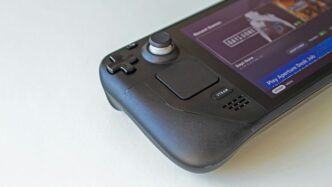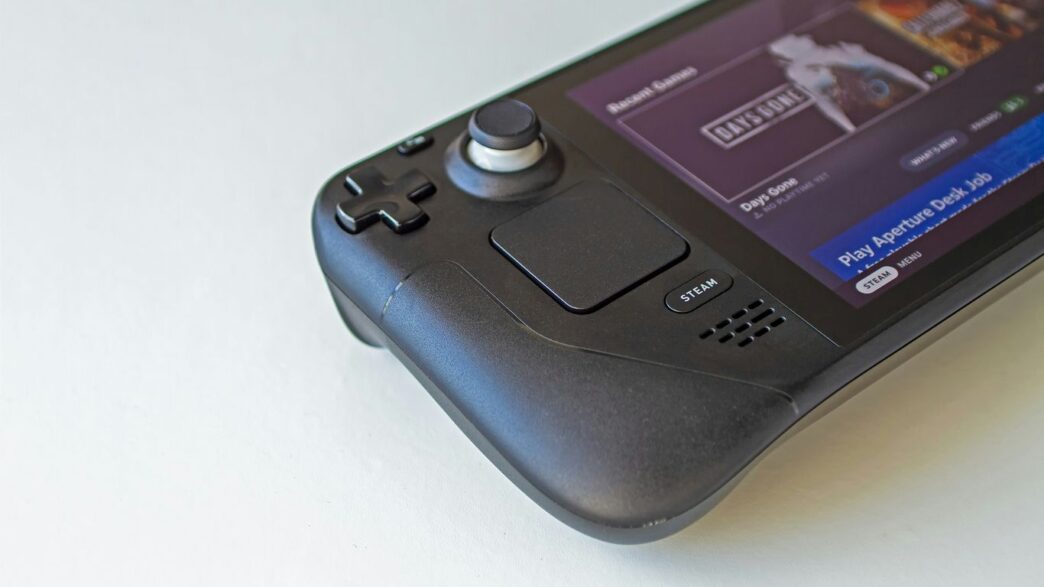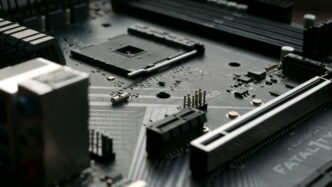It feels like handheld gaming is really blowing up right now. We’ve gone from simple devices to play on the go to some pretty powerful machines that can handle almost anything. With new stuff coming out all the time, it can be a lot to keep track of. This article looks at what’s happening now and what we can expect for the future of handheld gaming.
Key Takeaways
- The handheld gaming market is split into different tiers, from powerful PC-like devices to simpler ones for emulation and mobile games.
- New handhelds are constantly improving with better screens, faster processors, and more user-friendly interfaces.
- Cloud gaming and cross-platform play are becoming more important, making games accessible on more devices.
- When buying a handheld, think about what games you like, how much you want to spend, and how long you expect the device to last.
- The future of handheld gaming looks bright, with potential for even more advanced devices, AI integration, and new form factors.
The Evolving Landscape of Handheld Gaming
Remember when playing games on the go meant a chunky Game Boy with a few cartridges? Yeah, those days feel like ancient history now. The world of handheld gaming has exploded, and it’s not just about Nintendo anymore. We’re seeing a huge variety of devices pop up, from powerful portable PCs that can play your Steam library to sleek Android devices focused on retro emulation. It’s a really exciting time to be a gamer who likes to play anywhere.
Defining the Modern Handheld Experience
Today’s handhelds are way more than just simple toys. They’re sophisticated pieces of tech designed to offer a full gaming experience, just in a smaller package. Think high-resolution screens, comfortable controls, and the ability to play games that used to require a full desktop setup. The goal is to give you flexibility without sacrificing too much quality. Whether you’re commuting, traveling, or just lounging on the couch, the modern handheld aims to be your go-to gaming device.
Key Factors Driving Innovation
So, what’s pushing all these changes? A few big things are at play. First, there’s the sheer demand from players who want to game on their own terms. Second, component manufacturers are constantly improving processors, screens, and battery tech, making smaller, more powerful devices possible. Finally, the rise of digital storefronts and cloud gaming services means you have access to a massive library of games on almost any device. It’s a perfect storm for innovation.
Here are some of the main drivers:
- Component Miniaturization: Smaller, more powerful chips and batteries mean less bulk.
- Software Ecosystems: Platforms like Steam and Android offer vast game libraries.
- Player Demand: More people want to play anywhere, anytime.
- Cloud Gaming: Streaming games reduces the need for powerful local hardware.
Understanding the Diverse Market Tiers
It’s not a one-size-fits-all market anymore. You’ve got different types of handhelds for different needs and budgets. On one end, you have dedicated emulation devices that are great for older games and don’t cost a fortune. Then there are the powerful handheld PCs, which are essentially gaming laptops shrunk down, capable of running demanding modern titles. And of course, there are the established players like Nintendo, still offering their unique brand of portable fun. Figuring out where you fit in this spectrum is key to finding the right device for you. For instance, if you’re a big fan of PC games, a device like the Steam Deck OLED might be right up your alley.
Emerging Hardware Trends for 2025
Alright, let’s talk about what’s cooking in the world of handheld hardware for 2025. It feels like every few months, a new device pops up promising better graphics, longer battery life, or a slicker feel in your hands. It’s a bit of a wild west out there, but some clear patterns are emerging.
Advancements in Display Technology
Screens are getting a serious upgrade. We’re seeing more devices ditching basic LCDs for vibrant OLED panels, which means deeper blacks and way more punchy colors. Think about the difference between watching a movie on an old TV versus a new one – it’s that kind of leap. Plus, refresh rates are climbing. While 60Hz was the standard, many new handhelds are pushing towards 90Hz or even 120Hz. This makes motion look incredibly smooth, whether you’re dodging bullets in a fast-paced shooter or just scrolling through menus. Brightness is also a big deal, especially for playing outdoors. We’re seeing peak brightness figures climb, making screens easier to see even in direct sunlight.
Processing Power and Performance Gains
Under the hood, things are getting beefier. Processors are getting faster, and graphics chips are becoming more capable. This isn’t just about running the latest AAA games at higher settings, though that’s definitely a perk. It also means that emulation of older consoles is becoming even more accurate and stable. Devices are packing more RAM too, which helps with multitasking and loading times. It’s pretty wild to think that some of these handhelds can now rival desktop PCs from just a few years ago in terms of raw power. This push means we’re seeing more Windows-based handhelds that can actually handle a decent chunk of your PC game library.
Ergonomics and User Interface Innovations
Hardware makers are finally paying more attention to how these things actually feel in your hands. Nobody wants a device that’s uncomfortable to hold after an hour. We’re seeing more thoughtful button placements, better grip designs, and sometimes even adjustable components. Some devices are experimenting with dual screens or unique form factors, trying to find that perfect balance between portability and functionality. The goal is to make the device feel like a natural extension of your hands, not a clunky gadget. This also ties into the software side, with interfaces being tweaked to be more touch-friendly and intuitive for quick adjustments on the go.
Software and Ecosystem Developments
When we talk about handheld gaming, it’s not just about the shiny hardware. The software and how everything connects together plays a massive role in what you can actually do with your device. It’s like having a super-fast engine but no roads to drive on, right?
Operating System Adaptations for Portability
Most handhelds these days are either running Windows or a custom Linux-based OS, often with a special front-end to make things easier to use with a controller. Windows handhelds, like the ASUS ROG Ally X, are basically mini PCs. This means you can install pretty much any PC game or application you want. The downside? Windows wasn’t really built for tiny screens and thumbsticks, so sometimes navigating menus or even just updating the system can feel a bit clunky. You might find yourself needing to plug in a mouse or use the analog stick like a pointer, which isn’t always ideal when you’re on the go.
On the other hand, devices running custom OSs, like those using SteamOS or Android with specific launchers, often feel more streamlined for gaming. SteamOS, for example, is designed to work well with controllers and has a clean interface. Android devices can be great for emulation and mobile games, but they might not be as open for PC titles unless they have specific compatibility layers.
The Rise of Cloud Gaming Integration
Cloud gaming is really changing the game, literally. Services like Xbox Cloud Gaming, GeForce NOW, and Amazon Luna let you stream games directly to your handheld. This means you don’t need a super powerful device to play demanding titles. Your handheld just needs a good internet connection. It’s pretty neat because you can jump into a AAA game that would normally melt a portable console, all from a device that fits in your pocket.
Here’s a quick look at how some popular cloud services stack up:
| Service | Typical Latency | Game Library Access |
|---|---|---|
| Xbox Cloud Gaming | Low to Medium | Xbox Game Pass Ultimate subscription |
| GeForce NOW | Low to Medium | Games owned on supported PC storefronts (Steam, Epic) |
| Amazon Luna | Medium | Luna+ subscription, Prime Gaming, Twitch |
This makes older or less powerful handhelds suddenly much more capable. You’re essentially renting processing power from a data center.
Cross-Platform Compatibility and Accessibility
This is where things get really interesting for the future. Imagine starting a game on your PC and then picking it up right where you left off on your handheld, or vice-versa. That’s the promise of cross-platform play and save syncing. Many modern games and services are starting to support this, making your gaming library feel more unified.
Accessibility is also getting more attention. This includes:
- Customizable controls: Being able to remap buttons or adjust sensitivity.
- Visual aids: Options for color blindness or adjustable text sizes.
- Input flexibility: Support for different controllers or even touch input where appropriate.
As more developers and hardware makers focus on these aspects, handheld gaming becomes a more welcoming experience for a wider range of players. It’s about making sure everyone can join in on the fun, no matter their preferences or needs.
Navigating Your Purchase Decision
Alright, so you’ve been looking at all these cool handhelds, and now you’re probably wondering how to actually pick one that won’t end up gathering dust. It can feel a bit overwhelming with so many options out there, right? Let’s break it down.
Aligning Devices with Gaming Preferences
First off, think about what you actually like to play. Are you all about those big Nintendo adventures, like the next Zelda or Mario game? If so, sticking with Nintendo’s ecosystem, maybe looking at the Switch 2 when it’s fully out, makes a lot of sense. You know what you’re getting with those first-party titles. On the flip side, if your Steam library is bursting at the seams with games you’ve picked up over the years, a PC handheld like the Steam Deck or the Asus ROG Ally is probably a better bet. You’ll be able to play a huge chunk of your existing collection without a hitch. For those who love diving into retro games or want to play a ton of emulated classics, devices running Android or Linux, like some of the Anbernic models, are fantastic. They’re usually pretty affordable too.
Here’s a quick look at what kind of games different handhelds tend to lean towards:
| Handheld Type | Primary Platform Access | Examples |
|---|---|---|
| Nintendo Consoles | Nintendo Exclusives | Switch, Switch OLED, Switch 2 (upcoming) |
| PC Handhelds | PC Games (Steam, Epic, etc.) | Steam Deck, ROG Ally, Lenovo Legion Go |
| Android/Linux Handhelds | Emulation, Mobile Games | Anbernic RG35XX Plus, Miyoo Mini, Razer Edge |
| Streaming Handhelds | Cloud Gaming (PS Plus, xCloud) | PlayStation Portal, Logitech G Cloud |
Budgeting for Your Portable Gaming Needs
Let’s be real, these things aren’t always cheap. It’s super easy to get excited and spend way more than you intended. Before you even start seriously looking, decide on a price range. This will immediately help you filter out devices that are way out of your league. For example, some of the high-end Windows handhelds can easily go for over $1,000, which is a serious chunk of change. If your budget is more in the $300-$500 range, you’ll likely be looking at devices like the Steam Deck (especially if you catch a sale) or some of the more capable Android-based handhelds. Don’t forget to factor in the cost of games, accessories, and maybe even a microSD card if the internal storage isn’t enough.
Considering Longevity and Future-Proofing
When you’re dropping cash on a new gadget, you want it to last, right? Think about how long you expect to use this device. If you’re buying a brand-new console, like the Switch 2, you can probably expect several years of new games and support. For PC handhelds, the hardware might age a bit faster, but the beauty of Windows is that you can often upgrade storage or even install newer operating systems down the line. However, keep in mind that the cutting-edge performance you get today might not run the most demanding games smoothly in, say, three or four years. Also, consider the ecosystem. If a device relies heavily on a specific online service that might change or disappear, that’s something to think about. Ultimately, the best handheld for you is the one that fits your current gaming habits and budget, while still offering a path forward for your interests.
The Future of Handheld Gaming Beyond 2025
So, what’s next after 2025? It’s tough to say for sure, but we can make some educated guesses. The handheld gaming scene is moving fast, and it feels like we’re just getting started.
Anticipating Next-Generation Devices
We’re already seeing hints of what’s to come. Think more powerful chips that can handle games we only dreamed of playing on the go a few years ago. Screens will likely get even better, maybe with higher refresh rates or new display tech that makes colors pop even more. Battery life is always a big one, so expect manufacturers to keep pushing for longer playtimes between charges. And honestly, the form factor might change too. We’ve seen dual-screen devices pop up, and who knows, maybe we’ll see foldable screens or something completely unexpected.
The Role of AI in Portable Gaming
Artificial intelligence is showing up everywhere, and gaming isn’t going to be left out. AI could help make games smarter, with characters that react more realistically or worlds that feel more alive. It might also help developers create games more efficiently, which could mean more titles available for our handhelds. Imagine AI helping to generate game content on the fly, or even assisting with game balancing. It’s a bit sci-fi, but not impossible.
Potential for New Form Factors and Features
Beyond just better screens and faster processors, the really exciting stuff might be in how these devices look and feel. We could see more modular designs, where you can swap out components. Or maybe devices that blend seamlessly with augmented reality. It’s also possible that the lines between dedicated handhelds and our smartphones will blur even further, with phones becoming even more capable gaming machines. The biggest change might be how we access games, with cloud streaming becoming so good that the device itself matters less than the connection. It’s a wild west out there, and that’s what makes it so interesting.
Looking Ahead
So, where does all this leave us? It’s pretty clear that handheld gaming isn’t just a fad; it’s really hitting its stride. Whether you’re after the latest PC games on the go, want to revisit some old favorites through emulation, or are just waiting for that next big console release, there’s something out there for everyone. The tech keeps getting better, and the options keep expanding. It’s an exciting time to be a gamer who likes to play anywhere, and it looks like things are only going to get more interesting from here.
Frequently Asked Questions
What’s the biggest change coming to handheld gaming?
Get ready for even cooler screens! Companies are working on displays that will look super sharp and bright, making your games look amazing. Plus, the insides of these devices are getting a power boost, meaning games will run smoother and faster than ever before.
Will I be able to play my favorite games on any handheld?
It depends on the device. Some handhelds are like mini PCs and can play a huge variety of computer games. Others are made for specific game systems, like Nintendo’s, or are great for playing older games through emulation. It’s important to pick one that plays the kind of games you love.
Are handheld gaming PCs really worth the money?
These powerful handhelds can be pricey, sometimes costing as much as a good home computer. They let you play demanding PC games on the go, but their battery life might not last as long. If you want to play the latest big games anywhere, they could be worth it, but cheaper options are great for simpler games or older titles.
What’s cloud gaming and how does it work on handhelds?
Cloud gaming is like streaming a movie, but for games. The game actually runs on a powerful computer somewhere else, and you play it over the internet. This means you don’t need a super powerful handheld device yourself, just a good internet connection. It’s a growing trend that lets you play more games on simpler devices.
How do I choose the right handheld for me?
Think about what games you want to play most. Are you a fan of Nintendo’s exclusive games? Do you love playing PC games? Or are you interested in playing classic games from older consoles? Also, consider how much you want to spend and where you’ll be playing the most. This will help you pick the best device for your needs.
What new kinds of handhelds might we see in the future?
Besides faster and better screens, we might see some really unique designs! Imagine handhelds with different screen setups or maybe even devices that use smart AI to help you play better. The future could bring some surprising new ways to play games on the go.














